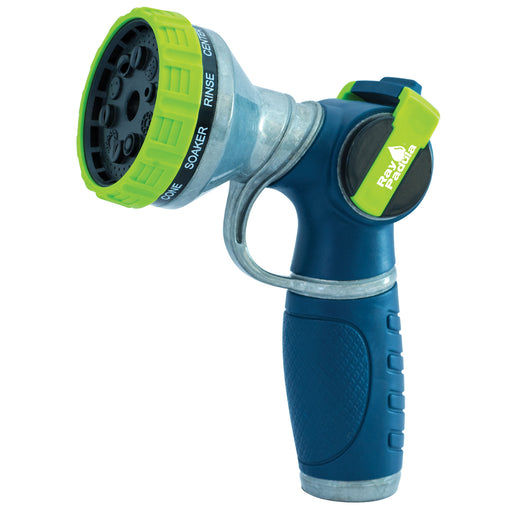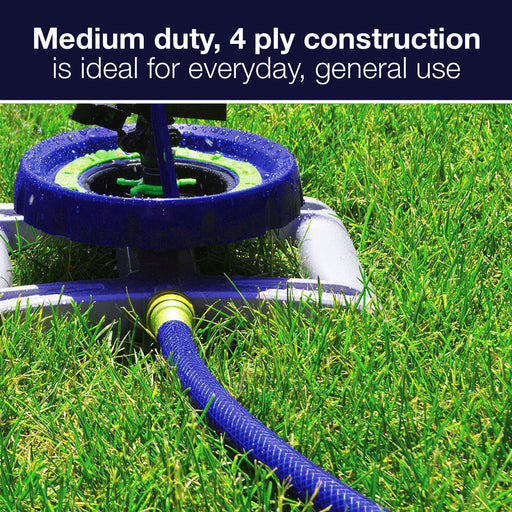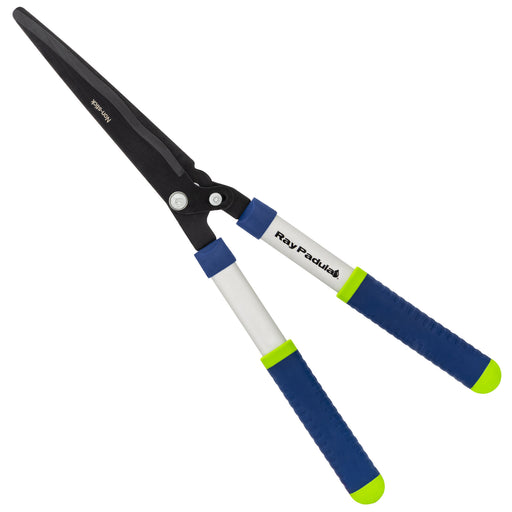
Dandelions
Appearance: Dandelion leaves are dark green and scalloped in shape. Yellow flowers emerge that turn into puffy seed heads when the seeds are ready to be released.
Growth: Dandelions have a long taproot (can grow up to two feet long) and spread by seeds
Control: Digging out the dandelion just once usually doesn't kill this plant. You may need to dig out the plant a few times before it won't return. You can also spot treat dandelions for faster removal with a systemic, post-emergence herbicide. Cut or mow off the yellow seed heads and bag lawn clippings before they release the seeds. Dandelions thrive on thin, weak lawns so regular maintenance of your lawn is a great way to naturally prevent these pests.

Crabgrass
Appearance: Crabgrass has coarse, light green leaves on heavy, thick stems that form a compact circle at ground level.
Growth: Crabgrass spreads quickly by seed.
Control: Great lawn maintenance is a great way to naturally prevent crabgrass. Crabgrass thrives on patchy, sparse, thinning turf. Crabgrass can be prevented by applying a lawn fertilizer with crabgrass prevention in early Spring before it emerges. Quickly pull out any crabgrass (including the roots) that may start to grow during the season.

Quackgrass
Appearance: Quackgrass has light green to blueish-green blades with a rough, upper surface.
Growth: These weeds spread by rhizomes and reproduce by seeds.
Control: Quackgrass is a very tough grass to kill. New growth can occur even when the top of the plant or any part of the rhizome is left intact. Spot treat these weeds with a non-selective, post-emergence herbicide and repeat the treatment as often as it returns. Even a well cared for lawn, with thick, dense turf won't prevent the growth of Quackgrass.

Annual Bluegrass
Appearance: Annual Bluegrass has pale green leaves with small white seed heads that grow on top of the grass. The lawn takes on a whitish color once these seed heads have emerged.
Growth: Annual Bluegrass reproduces by seed. It typically germinates in the late spring and early fall, but dies out in hot summer heat.
Control: Mow high to shade out the seedlings. Annual Bluegrass thrives in damp, compact soil, so aerate the soil to allow more air into the soil and improve drainage. Time watering so that the surface of the soil has time to dry out a bit in-between watering. Apply a pre-emergence herbicide in late summer and early fall to prevent germination.

White Clover
Appearance: White Clover has a shamrock shape leaf with a white or pink small ball flower. If used to be added to Kentucky bluegrass seed mixes in the 1940's and 1950's, making this one of the most prominent weeds in the northern US. In the summer, the flowers attract bees, which makes running around barefoot on the lawn a not-so-fun activity.
Growth: White Clover reproduces by seed and has a very strong above and below ground root system. It grows best in moist and phosphorous soils.
Control: You can dig clover up by hand using a trowel, or handheld weeder, or apply a post-emergence herbicide specifically formulated to control clover. Spot treat plants as they re-appear.

Mouse Ear Chickweed
Appearance: Mouse Ear Chickweed has small, rounded leaves with tiny hairs that make them look a bit fuzzy. Small, white flowers will begin to grow in late Spring and early Summer
Growth: Short runner keep this low-growing plant alive and spreading in the spring and early summer months. It reproduces by seed and thrives in moist, well-watered lawns.
Control: This weed is a tough one to control. For starters, it's too low to control with regular mowing. Secondly, when treating with herbicide, the tiny hairs on the leaves prevent the herbicide from reaching the leaf itself. To adequately treat, be sure to use a herbicide specifically for mouse ear chickweed, and ensure adequate, good coverage with the plant and leaves.

Yellow Nutsedge
Appearance: Yellow Nutsedge looks like grass, but its stems have a triangular shape instead of round. The leaves are also grouped in threes from the stem, instead of twos typically found on turf grass. Yellowish brown branched seed heads will appear during the summer months.
Growth: Yellow Nutsedge reproduces by seed and with small nutlike tubers that attach onto the roots. These tuber store food for the plant and are very drought tolerant. This weed thrives on poorly drained, very moist soil and is common in low-cut lawns.
Control: Mow high in early summer and avoid overwatering. Improve soil drainage whenever necessary. Hand-pull these plants when they are young. If growing, apply a selective herbicide that's formulated for nutsedge in the late spring or early fall.

Broadleaf Plantain
Appearance: Broadleaf Plantain has broad, egg-shaped leaves that are 2 to 10 inches long. The leaves form a central rosette that hugs the ground. Seed stalks can grow as high as 12 inches above the plant.
Growth: This plant reproduces by seed and grows strong in the early spring and fall. The seed stalks appear in early summer, through late fall. Broadleaf plantain thrives in moist, compacted soil.
Control: Pull these plants by hand when they are young, or dig them up (including the roots) before the stems have a chance to develop. Broadleaf plantain is easily controlled with a selective, post-emergence herbicide for broadleaf weeds. Aerate compacted soil and avoid overwatering the lawn to prevent this weed from growing.

Dallisgrass
Appearance: Dallisgrass has coarse, light green leaves. The sparsely branched seed heads grow on long stems that emerge in a star, or starburst shaped pattern from the center of the plant.
Growth: Dallisgrass spreads by seed as well as rhizomes. The rhizomes can continue to grow even after the plant has been pulled up. It grows best in wet, warm areas, and in high-cut grass. The seeds sprout in early spring and the plant grows vigorously all summer.
Control: Dig up clumps of Dallisgrass as soon as its noticed, making sure to dig up as much of the short rhizomes as you can. Reseed the area with grass seed. Spot treat Dallisgrass with a post-emergence herbicide in early spring or summer. Improve soil drainage by aeration.

Curly Dock
Appearance: Curly Dock has dark green, lance shaped leaves that turn reddish-purple around the edges in the summer and fall. It has a tall flower stalk that will produce small, green flowers.
Growth: Curly Dock spreads by seed. It grows vigorously in spring and fall and flowers in the summer.
Control: Dig out individual plants, including the roots using a trowel or weeder. Be sure to get as much of the root as possible. This may need to be repeated two or three times as any left over roots will quickly regenerate. Spot treat this week with a post-emergence herbicide.
Thoughts on Weeds
If you need help identifying which weeds are growing in your yard, you can bring a sample or photo to your local nursery or garden center. You local extension office may also be able to help identify the weeds and advise how best to eliminate them in your area. With proper maintenance, watering and mowing, most weed growth can be easily prevented all season long.
Legal Disclosure:
This post is provided for informational, educational purposes only. This information is intended to provide general guidelines. Because tools, products, materials, techniques, and local codes are constantly changing, Ray Padula Holdings assumes no responsibility for the accuracy of the information contained herein and disclaims any liability for the omissions, errors, or outcomes of any projects or tasks completed. It is the responsibility of the reader to ensure compliance with all local laws, rules, codes, and regulations for any projects completed. If there are any questions or doubts regarding any elements of any information provided, consult a local, licensed professional.







































